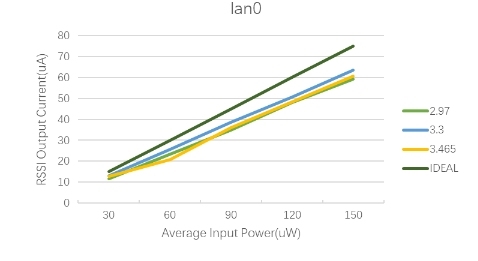My customer used our TI-TIA ONET2804T in their ROSA, when they test RSSI, they got split in different voltage input, please check the plot:
It was tested in Rrssi at 10kohm: (marked red in the second figure), his questions are:
1: why there are splits in the RSSI at different voltage
2. at what value we should set the Rrssi for the best performance, means close to ideal and no split.




